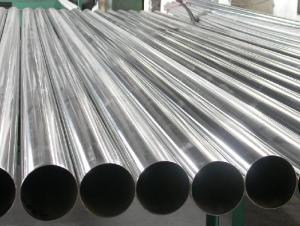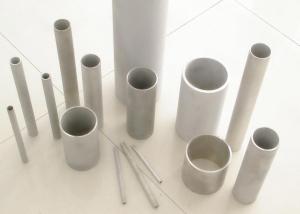STAINLESS STEEL ROLL
- Loading Port:
- Shanghai
- Payment Terms:
- TT OR LC
- Min Order Qty:
- -
- Supply Capability:
- 5000 m.t./month
OKorder Service Pledge
Quality Product, Order Online Tracking, Timely Delivery
OKorder Financial Service
Credit Rating, Credit Services, Credit Purchasing
You Might Also Like
grade | 201,304,410,ETC. |
surface | 2B, NO.1,ETC. |
thickness | 1MM, |
width | 1200MM,1220MM,1500MM,ETC. |
length | 2400MM,2440MM,3000MM,ETC. |
Payment terms | T/T, or L/C. |
Delivery time | Normally within 1 weeks after get your deposits. |
package | Standard export package, normally with wooden pallets |
MOQ | 5 tons/each size |
we can provide the best-quality ,and shortest producing time.
we have the hot rolled and cold rolled for stainless steel sheet/coil,etc.
please feel free to contact me, thanks in advance !
- Q: How do you prevent fingerprints and smudges on stainless steel sheets?
- To prevent fingerprints and smudges on stainless steel sheets, you can use the following methods: 1. Clean with a microfiber cloth: Use a soft microfiber cloth to wipe down the stainless steel surface regularly. This will help remove any fingerprints or smudges quickly without leaving scratches. 2. Use a mild detergent: Mix a few drops of mild dish soap with warm water and dampen the microfiber cloth. Gently wipe the stainless steel surface in the direction of the grain, then rinse and dry with a clean cloth. 3. Apply stainless steel cleaner: There are specific stainless steel cleaners available in the market. Follow the instructions on the product and apply it to the surface using a soft cloth. This cleaner will help repel fingerprints and leave a protective coating on the stainless steel. 4. Avoid harsh cleaners and abrasive materials: Avoid using abrasive cleaning pads, steel wool, or harsh chemicals as they can scratch the stainless steel surface. Stick to gentle cleaning methods to maintain its shine. 5. Use gloves: When handling stainless steel sheets, wear gloves to prevent leaving fingerprints or smudges on the surface. By following these preventive measures, you can keep stainless steel sheets free from fingerprints and smudges, ensuring a clean and polished appearance.
- Q: Can stainless steel sheets be used for decorative backsplashes?
- Yes, stainless steel sheets can be used for decorative backsplashes. Stainless steel is a versatile and durable material that is commonly used in kitchen and interior design. It offers a sleek and modern look, making it a popular choice for contemporary and industrial-style kitchens. Stainless steel backsplashes are not only visually appealing but also highly functional, as they are resistant to heat, stains, and water. Moreover, stainless steel is easy to clean and maintain, making it a practical option for a backsplash in a busy kitchen. Whether you prefer a polished, brushed, or patterned finish, stainless steel sheets can be customized to suit your aesthetic preferences, allowing you to create a stylish and eye-catching backsplash that complements your overall design scheme.
- Q: 1cm thick 201 stainless steel plate how much money party
- 1 thick 201 stainless steel sheet, 95 yuan / square meters.Stainless steel (Stainless Steel) is stainless acid resistant steel abbreviation, resistant to air, steam
- Q: What are the different types of surface protection available for stainless steel sheets?
- There are several types of surface protection available for stainless steel sheets, each designed to provide varying levels of protection against corrosion, scratches, and other forms of damage. 1. Protective film: This is a commonly used surface protection method, where a thin, adhesive film is applied to the stainless steel sheet. The film acts as a barrier, protecting the surface from scratches, dirt, and other contaminants. It is typically removed after installation. 2. PVC coating: Polyvinyl chloride (PVC) coating is another popular option for surface protection. It is a thicker, more durable layer that provides excellent corrosion resistance. PVC coatings come in various colors and finishes, and can be applied to stainless steel sheets through a process called powder coating. 3. Paint coating: Similar to PVC coating, paint coating involves applying a layer of paint to the stainless steel surface. This can be done through spray painting or electrostatic coating methods. Paint coatings not only protect against corrosion but also offer aesthetic enhancements. 4. Passivation: Passivation is a chemical process that removes iron from the stainless steel surface, creating a protective oxide layer. This layer improves the corrosion resistance of the stainless steel sheet. Passivation is commonly used in industries where the stainless steel is exposed to aggressive environments. 5. Electropolishing: Electropolishing is a process that removes a thin layer of metal from the stainless steel surface, resulting in a smooth and clean finish. This process not only enhances the appearance of the stainless steel but also improves its resistance to corrosion. 6. Metal plating: Metal plating involves applying a thin layer of another metal, such as zinc or nickel, onto the stainless steel surface. This provides sacrificial protection, as the plated metal corrodes instead of the underlying stainless steel. Metal plating is commonly used in outdoor applications where the stainless steel is exposed to harsh environments. It is important to choose the appropriate type of surface protection based on the specific requirements of the stainless steel sheet. Factors such as the environment, intended use, and aesthetic preferences should be considered when selecting the most suitable surface protection method.
- Q: Are stainless steel sheets suitable for laser cutting?
- Yes, stainless steel sheets are suitable for laser cutting. Laser cutting is an efficient and precise method for cutting stainless steel sheets, as lasers can easily penetrate the material and create clean, accurate cuts. Stainless steel sheets have high heat resistance, which makes them ideal for laser cutting as they can withstand the intense heat generated by the laser beam. Additionally, stainless steel sheets have excellent corrosion resistance, making them a popular choice for various industries. Laser cutting ensures minimal distortion and no contact with the material, resulting in a high-quality finished product.
- Q: Can stainless steel sheets be used for medical implants?
- Medical implants can indeed utilize stainless steel sheets. In the medical realm, stainless steel is frequently employed due to its remarkable resistance to corrosion, its strength, and its affordability. It is also biocompatible, meaning that it does not provoke any undesirable reactions when in contact with bodily tissues or fluids. To meet the distinct demands of medical implants, such as orthopedic plates, bone screws, dental implants, and cardiovascular stents, stainless steel sheets can be manufactured into a variety of shapes and sizes. Furthermore, stainless steel is easily cleanable and sterilizable, rendering it well-suited for implantation within the human body. However, it is important to note that different grades of stainless steel may possess varying attributes. As a result, it is crucial to choose the appropriate grade based on the specific application and requirements of the medical implant.
- Q: What are the different types of stainless steel sheet edges available?
- There are several types of stainless steel sheet edges available, including mill edge, slit edge, deburred edge, rounded edge, and beveled edge. Each type has its own unique characteristics and is used for specific applications.
- Q: Are stainless steel sheets suitable for architectural wire mesh?
- Architectural wire mesh benefits greatly from the use of stainless steel sheets. This material is a popular choice in architectural applications because of its many advantageous properties. Firstly, stainless steel is exceptionally durable and resistant to corrosion, making it perfect for both indoor and outdoor use over long periods of time. This corrosion resistance is particularly important for architectural wire mesh, as it ensures the material will maintain its integrity and appearance over time. In addition to this, stainless steel sheets offer excellent strength and stability, making them capable of withstanding the various stresses and strains that architectural wire mesh may encounter. This is crucial in applications where the mesh needs to support structural loads or provide security. Furthermore, stainless steel comes in different grades, allowing for customization to meet specific project requirements in terms of strength and flexibility. Stainless steel sheets also have a significant aesthetic appeal. Their sleek and modern appearance complements contemporary architectural designs and adds an elegant touch to any space. Moreover, stainless steel can be finished in different ways, such as brushed, polished, or coated, to achieve the desired visual effect. Lastly, stainless steel is a sustainable choice for architectural wire mesh. It is 100% recyclable, reducing environmental impact and supporting green building initiatives. Additionally, its long lifespan and low maintenance requirements contribute to its sustainability, minimizing the need for frequent replacements or repairs. In conclusion, stainless steel sheets are highly suitable for architectural wire mesh due to their durability, corrosion resistance, strength, aesthetic appeal, and sustainability. Architects and designers prefer them for their versatility in meeting various project requirements and their ability to create visually stunning and functional wire mesh installations.
- Q: Are stainless steel sheets suitable for corrosive environments?
- Yes, stainless steel sheets are suitable for corrosive environments. Stainless steel is known for its corrosion resistance properties, making it an ideal material for applications where there is exposure to moisture, chemicals, or other corrosive substances. This is due to the presence of chromium in stainless steel, which forms a protective layer on the surface, preventing the material from rusting or corroding. Additionally, stainless steel sheets are available in different grades, such as 304 and 316, which offer varying levels of corrosion resistance. Therefore, stainless steel sheets are commonly used in industries such as chemical processing, marine environments, food and beverage processing, and pharmaceuticals, where protection against corrosion is crucial.
- Q: Can stainless steel sheets be used for elevator cabs?
- Elevator cabs can indeed utilize stainless steel sheets. This material is widely preferred for its robustness, ability to withstand corrosion, and attractive appearance. Its sleek and contemporary look renders it highly desirable for both commercial and residential elevators. Customizing and fabricating stainless steel sheets to meet the precise dimensions and design specifications of an elevator cab is a straightforward process. Moreover, stainless steel is effortless to clean and maintain, which is particularly crucial in frequently used spaces like elevators. In sum, stainless steel sheets present a dependable and fitting option for elevator cabs.
Send your message to us
STAINLESS STEEL ROLL
- Loading Port:
- Shanghai
- Payment Terms:
- TT OR LC
- Min Order Qty:
- -
- Supply Capability:
- 5000 m.t./month
OKorder Service Pledge
Quality Product, Order Online Tracking, Timely Delivery
OKorder Financial Service
Credit Rating, Credit Services, Credit Purchasing
Similar products
Hot products
Hot Searches
Related keywords
























